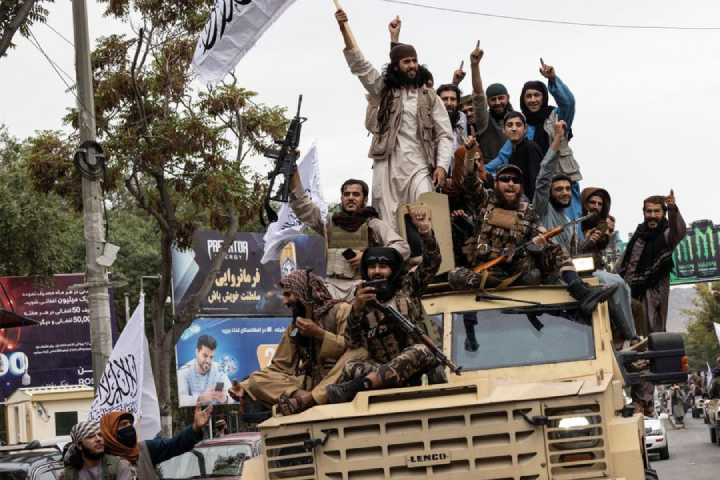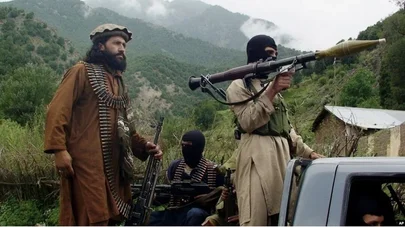Around 200 fighters of the Al Qaeda in Indian Subcontinent (AQIS), the South Asia-focused branch of the parent terrorist organisation, are still active, may be planning operations in Jammu and Kashmir, Bangladesh and Myanmar, a report on global operations of Al Qaeda and Islamic State of Iraq and Syria (ISIS) by the Analytical Support and Sanctions Monitoring Team of the UN Security Council has said.
The report says that the AQIS is grooming an affiliate for Kashmir operations. Plus, the report has also raised concern on Taliban-ruled Afghanistan being the epicenter of global terrorism, with around 20 militants groups operating from its soil.
Al Qaeda uses Afghanistan as an ideological and logistical hub to mobilise and recruit new fighters while covertly rebuilding its external operations capability. Al-Qaeda is in a reorganisation phase, establishing new training centres in Kunar and Nuristan Provinces. UNSC member states assessed that Al Qaeda would likely remain dormant in the short term while developing its operational capability and outreach.
According to the UN report, the Al Qaeda core in Afghanistan remains stable at 30 to 60 members, while all Al Qaeda fighters in the country are estimated to be 400, reaching 2,000 with family members and supporters included.
The report also mentions Osama Mehmood being the AQIS chief.
The @StateDept’s terrorist designation of AQIS leaders Osama Mehmood, Atif Yahya Ghouri, and Muhammad Maruf, and TTP leader Qari Amjad, reinforces our commitment to countering the threat posed by terrorist groups operating in Afghanistan. (3/4) pic.twitter.com/tznLi2ZtWS
— State Dept CT Bureau (@StateDeptCT) December 1, 2022
A 2023 United Nations report has concluded that Saif al-Adel, a former Colonel of Egyptian Army, had been named de-facto leader of Al Qaeda but that he had not been formally proclaimed as its Emir due to “political sensitivities” of the Afghan government in acknowledging the killing of Ayman Al Zawahiri in Kabul and the “theological and operational” challenges posed by location of al-Adel in Iran.
After the successful operation against Ayman al-Zawahiri, who will become the new leader of al-Qa`ida? @Ali_H_Soufan profiled one possibility, Saif al-`Adl, in our journal last year. Essential reading this morning: https://t.co/0rxePWpLHH pic.twitter.com/UWfctoAHxe
— CTC at West Point (@CTCWP) August 2, 2022
One most glaring aspect of the UN report is that Al Qaeda is maintaining “a close and symbiotic” relationship with the Taliban government. Under the patronage of high-ranking Taliban officials, Al Qaeda members “infiltrate law enforcement agencies and public administration bodies”, ensuring the security of the group’s cells across Afghanistan. Al Qaeda’s capability to conduct large-scale terror attacks “remains reduced while its intent remains firm”.
The report says that Al Qaeda is also working to strengthen cooperation with non-Afghan terror groups such as the Islamic Movement of Uzbekistan (IMU), Turkistan Islamic Party (TIP) and Jamaat Ansarullah.
UN member states also assessed the Islamic State of Iraq and Levant-Khorasan Province (ISIL-KP) as the “most serious terrorist threat in Afghanistan and the wider region.” The ISIL-KP has actually in recent years developed close links with AQIS and many recruits from India and Pakistan have worked for this compound terror network.
ISIL-K is estimated to have from 4,000 to 6,000 members, including family members. Sanaullah Ghafari (alias Shahab al-Muhajir) is viewed as the most ambitious leader of ISIL-K. One member state reported that Ghafari was killed in Afghanistan in June. This remains to be confirmed. Mawlawi Rajab is the leader of external operations for ISIL-K.
“ISIL-K is becoming more sophisticated in its attacks against both the Taliban and international targets. The group was focused on carrying out a strategy of high-profile attacks to undermine the Taliban’s ability to provide security,” the report said.
“Overall, ISIL-K attacks demonstrated strong operational capability involving reconnoiter, coordination, communication, planning and execution. Furthermore, attacks against high-profile Taliban figures in Balkh, Badakhshan and Baghlan provinces raised ISIL-K morale and boosted recruitment,” the report said.
Al Qaeda, India and Kashmir
One of the foremost targets of the AQIS is India and Kashmir has been on its radar since 2010 onwards. When Osama Bin Laden was killed in May 2011, his death was widely mourned in several areas of the Kashmir Valley, with late Hurriyat leader Syed Ali Shah Geelani leading an absentee funeral prayer.
However, as per an expert report of 2017, Al Qaeda has not been able to make significant inroads into the Kashmir theatre. The new threat, as evident from the UN report, may be a renewed effort by the terror group to reinvigorate its network. It will be noteworthy how and through which channel Al Qaeda chooses to infiltrate into Kashmir.
Meanwhile, the nexus of AQIS-ISIL-KP has already made its foray into India. Some youths from Kerala who went missing and then were reported to have joined ISIL were poached by this terror network. Similarly, many youths who were arrested between 2013 to 2016 from various locations like UP, Gujarat, Delhi and Odisha were also charged as members of the AQIS. Some of them were acquitted, while some were jailed for providing some help to the terror group like in disseminating its literature, etc.
In the last two years, a number of Bangladeshis have been arrested in India on charges of being AQIS operatives. Since September 2021 till July 2023, there have been more than 50 such arrests all across India.
TTP and Al Qaeda merger?
The report also reveals that the Tehreek-e-Taliban Pakistan (TTP) that comprises tribal militants and now operates largely from Afghanistan soil may join hands with Al Qaeda to form an umbrella group of all terror groups based in South Asia.
The report also shed light on how the banned TTP was gaining momentum in Afghanistan since the Afghan Taliban took control in August 2021.The report also highlighted how other terrorist outfits were using the TTP cover to operate in the war-torn country.
“Some UN member states registered concern that TTP might provide an umbrella under which a range of foreign groups operate, or even coalesce, avoiding attempts at control by the Taliban,” the report says, as quoted by Dawn.
The report notes that the TTP and Al Qaeda are coordinating operations to increase attacks within Pakistan. According to the document, training camps run by various terrorist groups in Afghanistan’s Kunar province are being used by fighters of the banned TTP as well.
The report also revealed that the TTP has been emboldened by the Taliban takeover of Afghanistan and that it has reestablished territorial control in Pakistan in recent months.
UN monitors noted that the proscribed TTP remained focused on high-value targets in border areas and soft targets in urban areas.
Earlier, some reports citing UN officials had said that TTP cadres were relocated from Pakistani territories by the Afghan Taliban regime after Pakistan registered heavy protest.
Now, the UN panel has demonstrated concerns that the outlawed TTP could become a regional threat if it continues to have a safe operating base in Afghanistan.
Also Read: India raises alarm as ISIL-KP takes root in Taliban-ruled Afghanistan
















